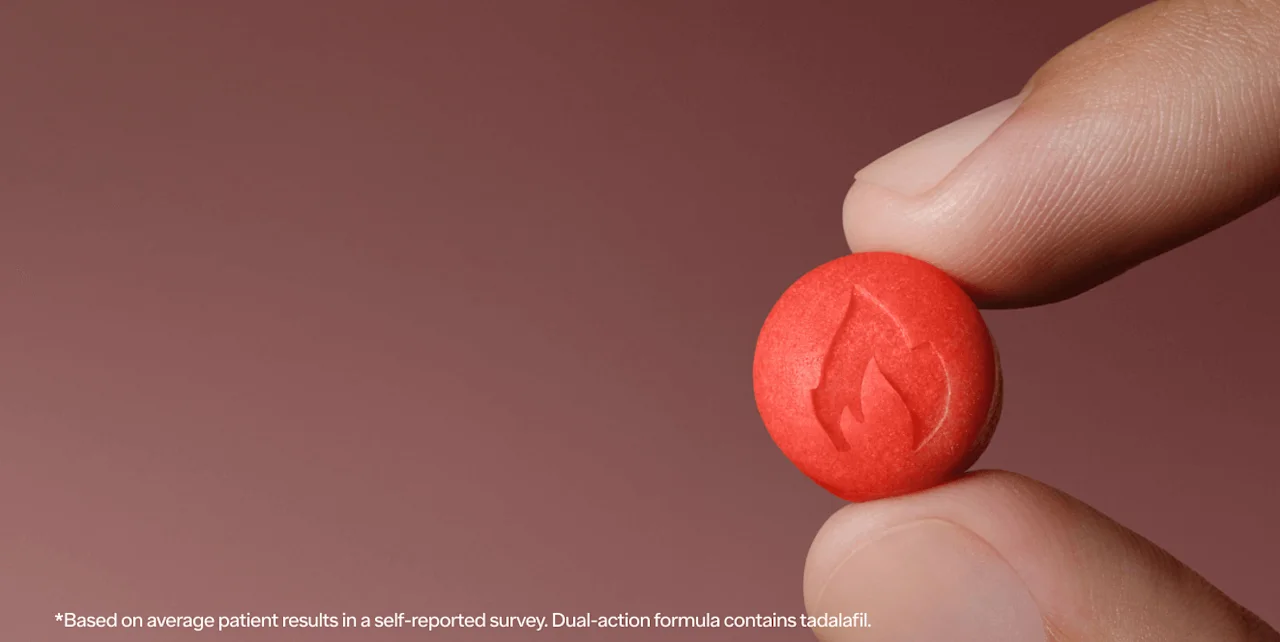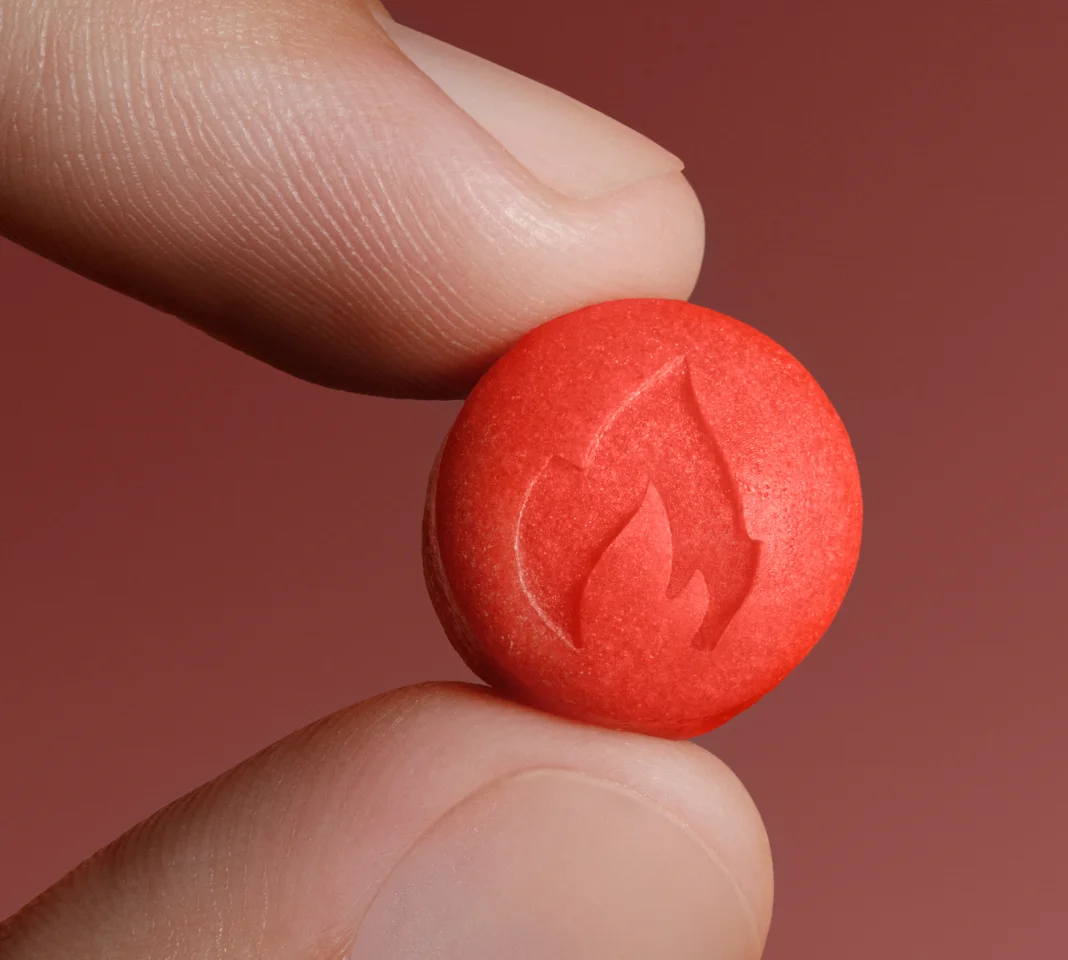Key takeaways
Sildenafil (Viagra) is a prescription medication that is usually prescribed in 25 mg, 50 mg, or 100 mg doses.
Exceeding the dosage of sildenafil prescribed by your healthcare provider or taking it more than once within a 24-hour period can be considered too much sildenafil.
If you take more than the recommended dose, you are more likely to have a side effect that could be serious, such as chest pain or shortness of breath.
Here's what we'll cover
Key takeaways
Sildenafil (Viagra) is a prescription medication that is usually prescribed in 25 mg, 50 mg, or 100 mg doses.
Exceeding the dosage of sildenafil prescribed by your healthcare provider or taking it more than once within a 24-hour period can be considered too much sildenafil.
If you take more than the recommended dose, you are more likely to have a side effect that could be serious, such as chest pain or shortness of breath.
Sildenafil (Viagra) is an effective, often first-line treatment for erectile dysfunction (ED). But how much sildenafil is too much? As with all medications, you want to take the recommended dose, even if it doesn’t work right away. Sometimes, it seems beneficial to take more since sildenafil doesn’t give you an immediate erection. The medication requires sexual arousal (and usually at least 30 minutes to an hour) to work most effectively.
So if you’re expecting fireworks and left disappointed, it’s understandable that you may consider doubling or increasing your sildenafil dosage—but don’t do this without first consulting a healthcare provider. When someone takes more than the recommended amount, sildenafil comes with a risk of side effects and complications.
Continue reading to learn what to do instead and how a healthcare provider can help you determine the right sildenafil dosage.
How much sildenafil is too much?
Any amount over or more than the dose prescribed by your healthcare practitioner is too much sildenafil. The same can be said of taking sildenafil more than once in 24 hours.
While the drug is available in varying strengths of 25mg, 50mg, and 100mg, the usual starting dose is often 50mg, taken as needed. Depending on effectiveness and tolerability—i.e. whether you experience side effects and/or the desired results—your healthcare provider may increase or decrease your dose as they see fit. No matter the prescribed strength, you should take sildenafil at least 30 minutes before sexual activity; you can, however, can take it up to four hours in advance.
Keep in mind that it can take time (about a half hour) for sildenafil to kick in. So, if it’s been less than 30 minutes since you took the drug, try to be patient and give it a little more time, as its effects may strengthen. That said, if your prescription isn’t helping you get and maintain erections firm enough for satisfying sex, talk to your healthcare provider instead of taking an extra dose of the drug. You should not take matters into your own hands, regardless of how badly you may want to get it on; taking more than the recommended amount can lead to serious side effects.
So, if you’re asking, “How much sildenafil is too much?” because you think you’d be better off with a higher dose, know this: It is possible to adjust your sildenafil dosage, but only with the guidance and green light from your healthcare provider. There are alternative ED treatments that might be a better fit for you and your symptoms, such as other prescription drugs like tadalafil (Cialis)—but more on these later.
Sildenafil dosage and strength for erectile dysfunction
As mentioned above, sildenafil is available in three strengths—25mg, 50mg, and 100mg—with 50mg being the most commonly prescribed initial amount. It is also available in 20mg strength tablets prescribed as Revatio off-label.
Low-dose sildenafil (25mg) is often usually used in certain circumstances: if you’re over the age of 65 or if you’ve ever experienced side effects when taking the standard starting dose of the drug. Your healthcare provider may also prescribe low-dose sildenafil if you have kidney or liver medical conditions or are taking certain medications.
Researchers have used doses as high as 200mg to treat severe ED, but more research is needed on the safety of high amounts. One small study of 54 participants with ED showed that high-dose sildenafil in those who had not responded to lower dosages improved the condition in just 13 of the 54 participants (24%). At the highest dose, 63% of the participants reported experiencing side effects like headaches and facial flushing. While higher dosages may work for some people who aren’t responding to lower dosages, keep in mind that there is a risk of side effects as well.
Among the participants who saw improvements in their symptoms, the side effects were so severe that many decided it wasn’t worth it. Of the 13 participants who had success with the high-dose treatment, 31% refused to continue because of the adverse effects.
While dosage is important, what’s just as important is remembering to take sildenafil at the right time: at least 30 minutes before sex. Technically, it can be taken anytime from four hours to 30 minutes before sexual activity depending on how you react to the medication. And again, you should only take sildenafil once every 24 hours. Sildenafil is also better absorbed on an empty stomach, so trying to take the medication before meals (or 3 hours after meals) can give you a better result. Remember, the drug works for 4 hours or more in enhancing erections.
Your healthcare provider will weigh the pros and cons of various sildenafil doses to help you make the right decision.
What can happen if you take too much sildenafil?
As with many prescription drugs, sildenafil can have some serious health impacts—including overdose—if you take too much.
Some of the most common effects of taking too much include:
Low blood pressure
Cardiovascular problems, including an increased risk of heart disease or heart attack
Ringing in ears
Chest pain
Increased risk of hearing loss
Stomach bleeding, particularly for those with a history of stomach ulcers
Eye problems, including blurred vision, changes in color, and even vision loss
There have been numerous reports of people who have taken more than the recommended amount of Viagra, the brand-name version of sildenafil. While we still don’t know all the risks associated with taking too much ED medication, one potential complication is an eye problem called retinal toxicity. This can cause blurred vision, changes in color vision, and light sensitivity. Fortunately, these symptoms usually go away after you stop taking the medication, but some people can suffer permanent damage. Taking too much sildenafil can also lead to priapism, a prolonged erection in the absence of sexual stimulation, as well as sinus tachycardia, which is when the heart beats faster than usual.
If you experience any of the signs of priapism (a painful, prolonged erection) or an overdose, seek immediate medical attention.
There is no set amount of sildenafil that will warrant the aforementioned effects, which can be considered symptoms of an overdose. But anything over your prescribed amount (typically between 25mg and 100mg) may come with risks. If you are worried you have taken too much, seek medical attention.
Side effects of sildenafil
With any medication, it’s typical for healthcare providers to prescribe the minimum effective dose—the smallest dose that will work for you. That’s because the higher the dose, the higher the risk of side effects. Sildenafil is no exception.
Some common sildenafil side effects include:
Headache
Redness in the face
Temporary vision changes
Nasal congestion/stuffy nose
Muscle aches
Back pain
Nausea
Dizziness
Rash
The frequency of these side effects may increase dramatically with a higher dose. For example, in clinical trials, 16% of people who took 25mg of sildenafil experienced headaches. At a higher dose of 100mg, 28% of people experience headaches.
One reason healthcare providers typically start with a smaller dose and increase it according to patients' needs is to ensure that they can tolerate the medication. Following your healthcare provider’s instructions minimizes your risk of adverse effects.
Risks of sildenafil
Despite being widely used to treat ED, sildenafil is not safe for everyone. For example, people taking certain drugs for heart disease, such as nitrates, should not use the medication. This is one of the reasons why it’s very important to tell your healthcare provider about any other medications (over-the-counter and prescription) you currently take. Drug interactions with sildenafil can include:
Alpha-blockers and other medications that treat high blood pressure
Guanylate cyclase (GC) stimulators
Antifungals
Nitrates
Sildenafil may not be safe for certain people as well. Those who have a history of heart problems or kidney or liver issues should check with a healthcare provider before taking the ED treatment.
Sildenafil alternatives
If sildenafil doesn’t work for you, there are plenty of other safe and effective options to treat ED. Sildenafil is a member of a class of drugs known as phosphodiesterase type 5 (PDE-5) inhibitors, which include prescription medications like tadalafil (Cialis), vardenafil, and avanafil (Strendra).
Depending on your lifestyle, one of these medications may work better for you than sildenafil:
Tadalafil takes 1–2 hours to work, but its effects can last up to 36 hours off and on. Tadalafil is available in a daily tablet, while other PDE-5 inhibitors are taken just before having sex.
Vardenafil may be the best option if you plan to take your medication with food. High-fat meals can slow down other PDE-5 inhibitors, but vardenafil works at the same speed even when taken with a moderate-fat meal.
Avanafil works within 15 minutes for many people, making it the fastest-acting PDE-5 inhibitor currently available.
There are also non-medication other options to help you get and maintain erections. Penis pumps and cock rings help draw blood into the penis for a firmer erection (with a penis pump) and prevent the blood from draining (with a cock ring).
Bottom line: how much sildenafil is too much?
As with any medication, a good rule of thumb is to take sildenafil as prescribed by your healthcare provider. The symptoms of ED are frustrating, but your healthcare provider is there to help you develop a treatment plan that’s right for you. So, how much sildenafil is too much?
Taking anything above your healthcare provider’s prescribed dosage of sildenafil and taking the drug more than once in 24 hours can be considered too much sildenafil.
Typically, sildenafil is prescribed in one of three doses—25mg, 50mg, or 100mg—and used as-needed at least 30 minutes before sexual activity. The medication can also be prescribed off-label in a 20mg dose. Healthcare providers usually begin with a lower dose to minimize the risk of side effects such as headaches, facial flushing, and temporary vision changes. If needed, your provider can adjust the dose based on your symptoms and tolerance.
Exceeding the prescribed dosage of sildenafil can lead to severe health complications, including heart problems, priapism (painful, prolonged erections), and even potential conditions such as tachycardia (a rapid heart rate) or retinal toxicity (damage to the retina that may affect vision). Seek immediate medical attention if you experience these symptoms and signs of overdose.
DISCLAIMER
If you have any medical questions or concerns, please talk to your healthcare provider. The articles on Health Guide are underpinned by peer-reviewed research and information drawn from medical societies and governmental agencies. However, they are not a substitute for professional medical advice, diagnosis, or treatment.
Viagra Important Safety Information: Read more about serious warnings and safety info.
Cialis Important Safety Information: Read more about serious warnings and safety info.
References
AHFS Patient Medication Information database. (2023). Sildenafil. Retrieved from https://medlineplus.gov/druginfo/meds/a699015.html
Coombs, P. G., Heck, M., Guhring, P., et al. (2012). A review of outcomes of an intracavernosal injection therapy programme. BJU International 110(11), 1787-1791. doi: 10.1111/j.1464-410X.2012.11080.x. Retrieved from https://pubmed.ncbi.nlm.nih.gov/22564343/
DailyMed. (2021). STENDRA- avanafil tablet. Retrieved from https://dailymed.nlm.nih.gov/dailymed/drugInfo.cfm?setid=a8726f90-9329-46ca-9379-2b50c78fe0e2
DailyMed. (2017). VIAGRA- sildenafil citrate tablet, film coated. Retrieved from https://dailymed.nlm.nih.gov/dailymed/lookup.cfm?setid=a2a9f459-e692-4e85-83b0-a35fbf35e91b
Dhaliwal, A. & Gupta, M. (2022). PDE5 inhibitor. StatPearls. Retrieved Oct. 12, 2022 from https://www.ncbi.nlm.nih.gov/books/NBK549843/
Galiè, N., Ghofrani, H.A., Torbicki, A., et al. (2005). Sildenafil citrate therapy for pulmonary arterial hypertension. New England Journal of Medicine, 353(20), 2148-2157. doi: 10.1056/NEJMoa050010. Retrieved from https://pubmed.ncbi.nlm.nih.gov/16291984/
Karaarslan, C. (2020). Ocular side effects of sildenafil that persist beyond 24 h—A case series. Frontiers in Neurology, 11(67). doi: 10.3389/fneur.2020.00067. Retrieved from https://www.frontiersin.org/articles/10.3389/fneur.2020.00067/full
Kim, H. D., Chang, J. H., Kim, Y. K., & Ohn, Y. (2017). Electrophysiologic effects of very high-dose sildenafil. JAMA Ophthalmology, 135(2), 165. doi: 10.1001/jamaophthalmol.2016.4017. Retrieved from https://jamanetwork.com/journals/jamaophthalmology/article-abstract/2595044
Kolomeyer, A. M. & Kim, B. J. (2018). High-dose sildenafil-associated acute macular neuroretinopathy variant. Ophthalmology Retina, 2(7), 711. doi: 10.1016/j.oret.2017.08.024. Retrieved from https://www.ophthalmologyretina.org/article/S2468-6530(17)30382-2/pdf
Matheeussen V, Kristof VE. Maudens, et al. (2015). Self-Poisoning Attempt with Sildenafil. Journal of Analytical Toxicology, 39(7), 572–576, https://doi.org/10.1093/jat/bkv071. Retrieved from https://academic.oup.com/jat/article-abstract/39/7/572/819563?redirectedFrom=fulltext
McMahon, C. G. (2002). High dose sildenafil citrate as a salvage therapy for severe erectile dysfunction. International Journal of Impotence Research, 14(6), 533-538. doi: 10.1038/sj.ijir.3900936. Retrieved from https://pubmed.ncbi.nlm.nih.gov/12494291/
National Center for Biotechnology Information-a. (2023). Priapism. Retrieved from https://www.ncbi.nlm.nih.gov/books/NBK459178/
National Center for Biotechnology Information-b. (2023). Sildenafil. Retrieved from https://www.ncfbi.nlm.nih.gov/books/NBK558978/
Rajagopalan, P., Mazzu, A., Xia, C., et al. (2003). Effect of high-fat breakfast and moderate-fat evening meal on the pharmacokinetics of vardenafil, an oral phosphodiesterase-5 inhibitor for the treatment of erectile dysfunction. Journal of Clinical Pharmacology, 43(3), 260-267. doi: 10.1177/0091270002250604. Retrieved from https://pubmed.ncbi.nlm.nih.gov/12638394/
Seidman, S. N., Pesce, V. C., & Roose, S. P. (2003). High-dose sildenafil citrate for selective serotonin reuptake inhibitor-associated ejaculatory delay: open clinical trial. Journal of Clinical Psychiatry, 64(6), 721-725. doi: 10.4088/jcp.v64n0616. Retrieved from https://pubmed.ncbi.nlm.nih.gov/12823089/
Sun, L., Peng, F., Yu, Z., et al. (2014). Combined sildenafil with vacuum erection device therapy in the management of diabetic men with erectile dysfunction after failure of first-line sildenafil monotherapy. International Journal of Urology, 21(12), 1263-1267. doi: 10.1111/iju.12564. Retrieved from https://onlinelibrary.wiley.com/doi/abs/10.1111/iju.12564
U.S. Food and Drug Administration (FDA). (2014). Label: VIAGRA (sildenafil citrate) tablets. Retrieved from https://www.accessdata.fda.gov/drugsatfda_docs/label/2014/20895s039s042lbl.pdf
Yan, H., & Wenzhen, Y. (2022. Retinal toxicity of long term overdose of sildenafil citrate: A case report. American Journal of Ophthalmology, 29, 101761. doi: 10.1016/j.ajoc.2022.101761. Retrieved from https://pmc.ncbi.nlm.nih.gov/articles/PMC9762146/
Yanoga F., Gentile, R. C., Chui, T. Y. P, et al. (2018). Sildenafil citrate induced retinal toxicity - ERG, OCT, and adaptive optics findings. Retinal Cases and Brief Reports, 12(Suppl 1), S33-S40. doi: 10.1097/ICB.0000000000000708. Retrieved from https://www.ncbi.nlm.nih.gov/pmc/articles/PMC6110976/
Zucchi, A., Costantini, E., Scroppo, F. I., et al. (2019). The first-generation phosphodiesterase 5 inhibitors and their pharmacokinetic issue. Andrology, 7(6), 804–817. doi: 10.1111/andr.12683. Retrieved from https://www.ncbi.nlm.nih.gov/pmc/articles/PMC6790582/













